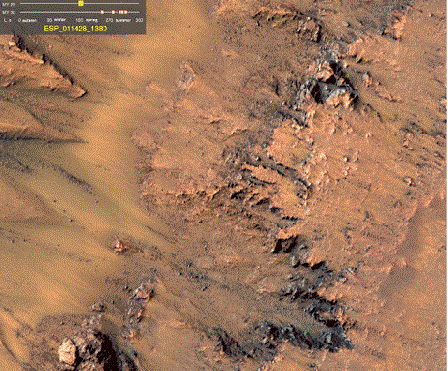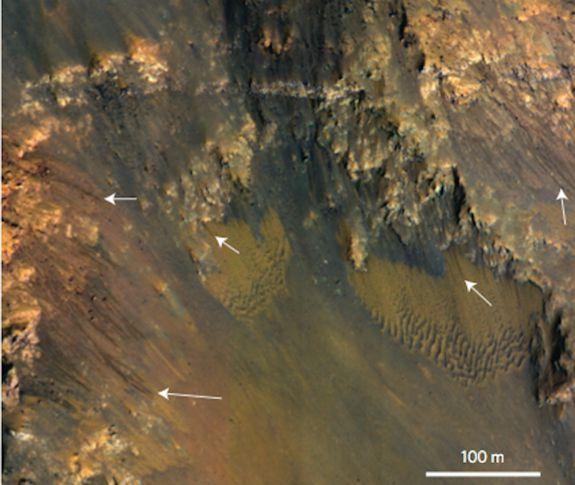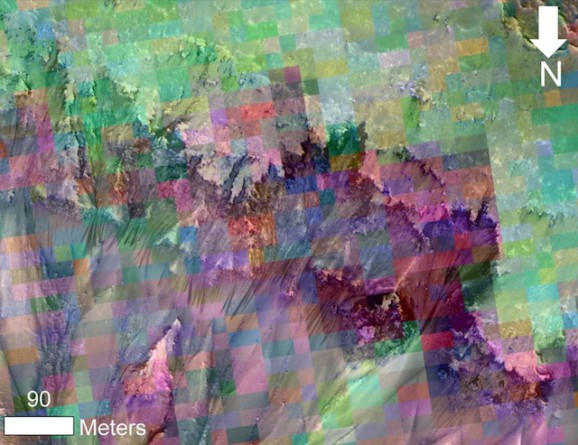There Might Be Water Flowing On Mars Right Now

Earlier in the Curiosity Rover‘s travels around the Red Planet it gleaned a bunch of information about the water-soaked soil, which set the stage for this latest revelation–that water may be flowing on Mars not at some point in the distant past, but right now.

Back in 2011, NASA announced the discovery of saltwater flows on Mars, as observed by the Mars Reconnaissance Orbiter. There were seven confirmed sites and dozens more that were yet to be confirmed, but most of those sites were located near the Martian equator, where temperatures get high enough to support liquid water. Now, in a recent publication in Nature magazine, astronomers note that they believe that “dark, finger-like features” filmed near Mars’ equator may in fact be more solid evidence of the presence of water. The presence of water is likely seasonal, fluctuating with the temperatures. But even in the summer Mars can be pretty chilly, and researchers have speculated that there’s something in the Martian water that prevents it from freezing—possibly iron. In the map below, you can see an image of the seasonal flows with an image from a mineral-mapping spectrometer superimposed over it. The darker lines likely represents the flow of water, as well as the mixing of water and iron.

Researchers aren’t willing to say that they’re 100% sure that they’re looking at flowing water. One of the study authors says this evidence isn’t “a smoking gun,” but that “we’re not sure how this process would take place without water.” There seems to be consensus that the best explanation for the seasonal dark streaks that lengthen during the summer is the presence of water. They’re not entirely sure of the origin of the water—maybe it comes from below the surface, but it could also come from water vapor that is released by the salty soil when the weather is warm.
While running water would have significant implications on the possible existence of life on the Red Planet, it also brings some challenges. Because these regions may harbor life, the Committee on Space Research (COSPAR) suggests that the areas should only be accessed by specially treated probes so that we don’t inadvertently introduce Earthly microbes to Mars. Such sterilization measures, which are a bit more complicated than using alcohol swabs, make missions considerably more expensive.
So, could Mars colonists drink this water? It would be incredibly salty, but beyond that, the ferric sulfate is dangerous—no known life on Earth could exist in water that full of iron. Even though it could potentially be diluted, it may not be worth the risk. I guess the colonists will have to stock up on Tang after all.











